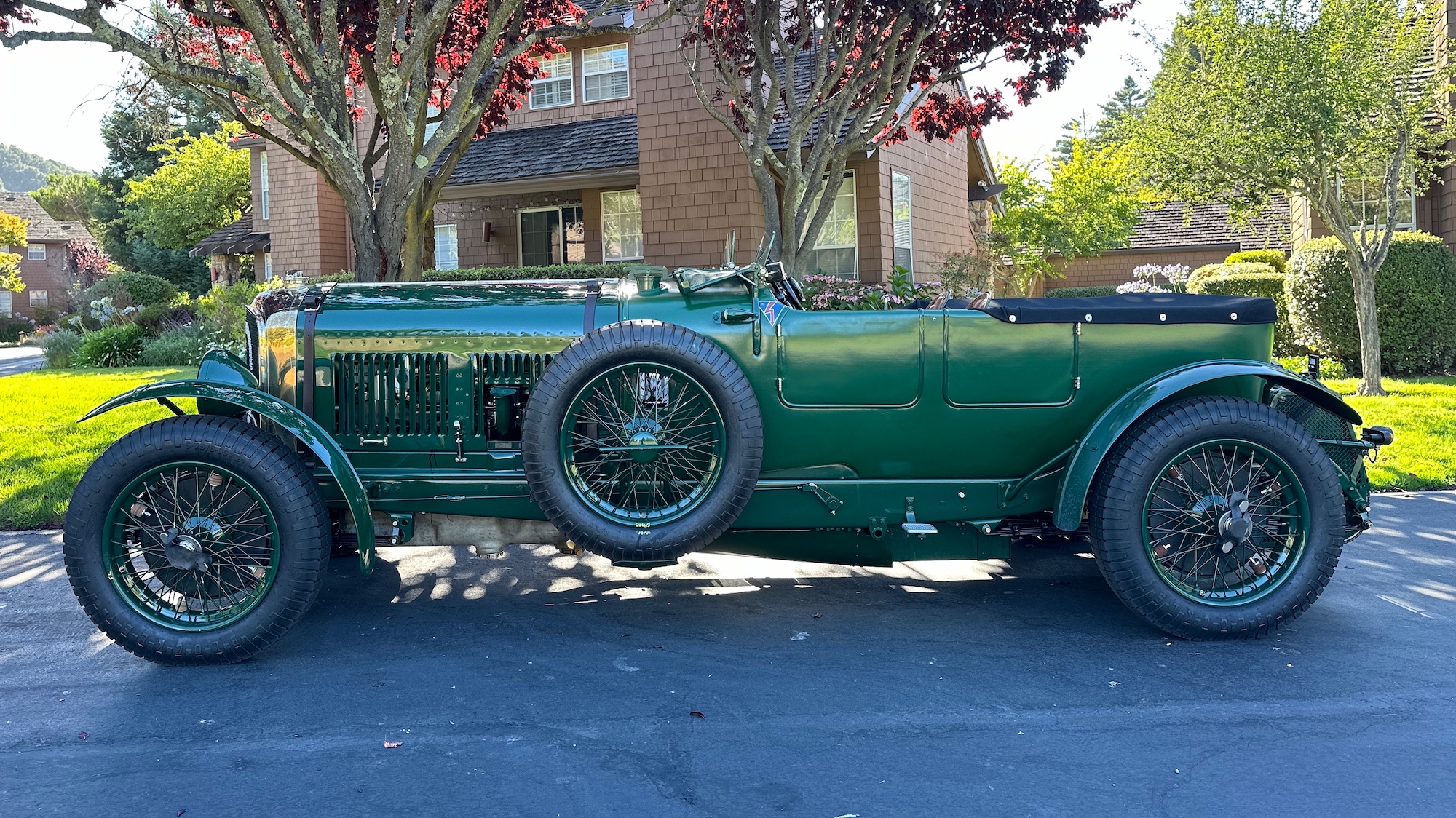

New car designs are flashy and shiny, and auto manufacturers put their futuristic ideas on display in the form of concept cars and next-generation technology. Bentley is no exception. In the last couple of years the British luxury brand has rolled out a high-tech thermal imaging system, seats that know you’re going to sweat before you do, and a zippy V8 hybrid.
Concurrently, Bentley has been working on a time machine, faithfully and painstakingly recreating its iconic Speed Six from 1930. It’s called a continuation, not a replica, which means Bentley used the same original design drawings, sourced the same materials, and employed the same techniques to build it as the automaker did nearly a century before.
This car has a history. In fact, Woolf Barnato (then the Bentley chairman and a three-time Le Mans race winner) made a bet that he could beat the Cannes-to-Calais Blue Train in his own Speed Six. Traveling across 570 miles with co-driver Dale Bourne, Bernato beat the train to Calais so soundly that he loaded his Speed Six onto a ferry and chugged across the English Channel, still arriving in London four minutes before the train got to Calais. The French police later fined the Bentley executive for racing on public roads–he averaged a blistering 43 miles per hour.

Unapologetically old school
Bentley says its classic Speed Six is one of the most important models in its history, as it was the winning car in the iconic Le Mans races in 1929 and 1930. The heart of the car is a 6.5-liter straight six engine designed by W.O. Bentley himself back in the 1920s and recreated exactly to the original specification, says Bentley’s Mike Sayer, head of product communications.
I took a spin in the Speed Six Car Zero with Sayer at the wheel; he is currently the only person cleared to drive it in the United States. That’s partly because driving it is about as different from a modern car as it would be taking a picture with an old Kodak No. 2 Brownie versus capturing a quick snap on your iPhone. Car Zero is the engineering test and development car for a run of 12, Sayer says, and it completed more than 8,000 kilometers of testing. The mule car also endured a six-hour race simulation and a top speed test to 115 miles per hour, also in line with period specs.


“The engine generates about 205 horsepower, which doesn’t sound like much for a six-and-a-half-liter engine, but back in the 1920s that was a supercar level of performance,” Sayer says. “And most importantly, given this was a Le Mans design it was incredibly reliable.”
Building the continuation car was a multi-stage process, with six months dedicated to the research and development of the chassis and crossmembers alone.
A $2M work of art
A miniscule subsection of car collectors will own the Speed Six, a hand-built $2 million machine. Considering how much work is put into each model, that’s no surprise. Every single Speed Six has been claimed already, with a build time of about 10 months each, and Bentley will retain Car Zero for its archives.
Eighty percent of the original drawings were provided by the WO Bentley Memorial Foundation, accompanied by mechanic’s notes outlining the modifications made between the 1929 and 1930 races. The attention to detail goes far beyond the mechanical heart of the car, however. Bentley’s custom Mulliner team dug into the car’s history to unearth five authentic period exterior paints, including the Parsons Napier Green finish on Car Zero.
The body itself is made in the traditional style from ash wood by Lomax Coachbuilders and covered by a period-correct fabric stretched across the frame. A father and son team from Vintage Headlamp Restoration International creates the round headlights, and the Vintage Car Radiator Company manufactures the radiator and gas tank.
More art than machine, the precise attention to the Speed Six Continuation’s development results in an exceedingly rare car. The dials are hand painted and even the leather seats are stuffed with horsehair, just as they were in 1930. On top of that, each customer will order a Speed Six to their own specifications (as one might expect from a $2 million vehicle).
The first build will begin in October, and all 12 are scheduled to be completed by the end of 2025; each car takes 10 months to complete.
